The Story of British Columbia at the Royal BC Museum
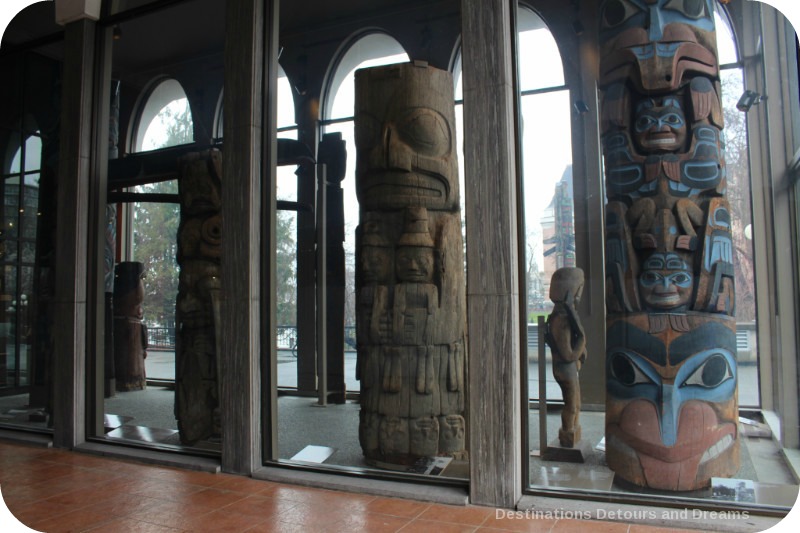
The Royal BC Museum in Victoria explores the social
and environmental history of British Columbia
The Royal BC Museum in Victoria, British Columbia strives to broaden the understanding of Canada’s most western province, and to inspire curiosity and wonder. I think the Museum does a wonderful job of doing that.
The Museum was originally founded in 1886. It grew over the years and lived in a couple of locations. It moved into its current building in 1968, where it has continued to grow and expand.
Natural History Gallery
Exhibits in the Natural History Gallery highlight the diverse ecosystems in British Columbia and history of the landscape and animal life. An information panel near the entrance says, “Change is the only constant in BC’s natural history.” BC’s natural history spans more than 550 million years, a time period over which continents have shifted, water bodies have formed and disappeared, and mountains have risen and fallen. What is first displayed in this section of the museum are BC’s two extremes: the Hothouse or Late Cretaceous Epoch (66 to 100 millions years ago) and the Ice Age or Pleistocene Epoch (26 million to 12,000 years ago).
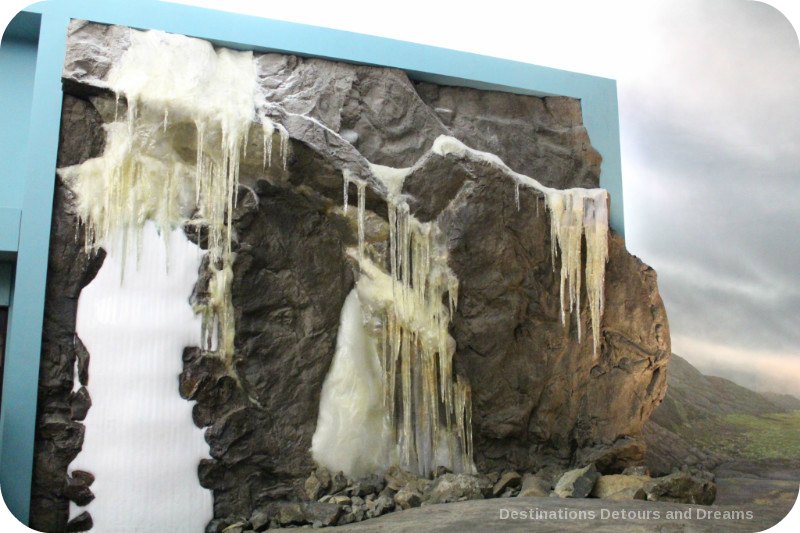
British Columbia is the gateway between continents. During the Ice Age, as sea levels dropped, exposed lands connected. Humans, mammals, birds, and even plants migrated through British Columbia to North America.
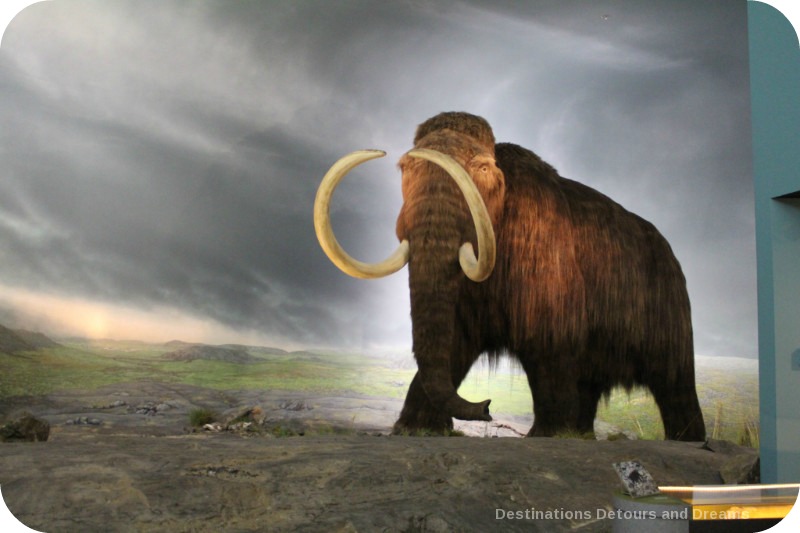
Exhibits transition from information about the changing past to information about the changing present, with a special focus on how humans are changing the landscape and the climate. The greenhouse gases we release into the atmosphere will trap energy for hundreds of years to come. The headline on one exhibit “Like Trying to Stop a Train” was particularly compelling.
Further into the gallery is information about the forest, seas and deltas of British Columbia. The dioramas are life-like and create a feeling of actually being there.
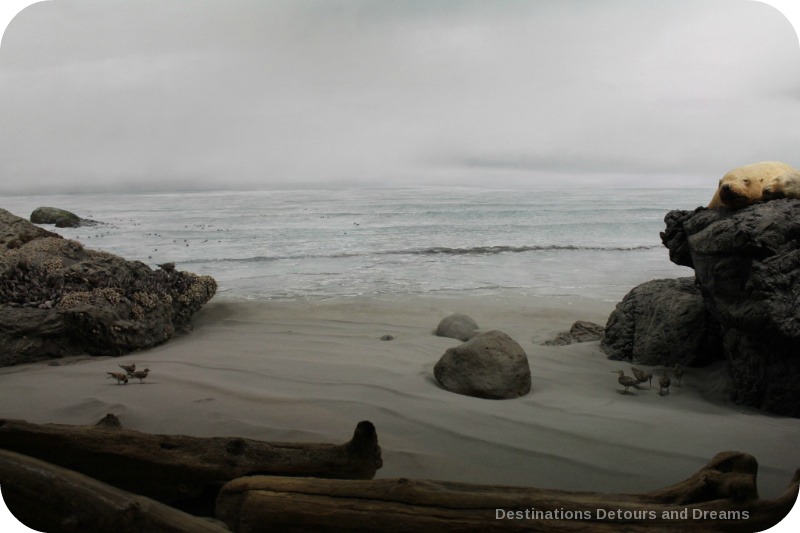
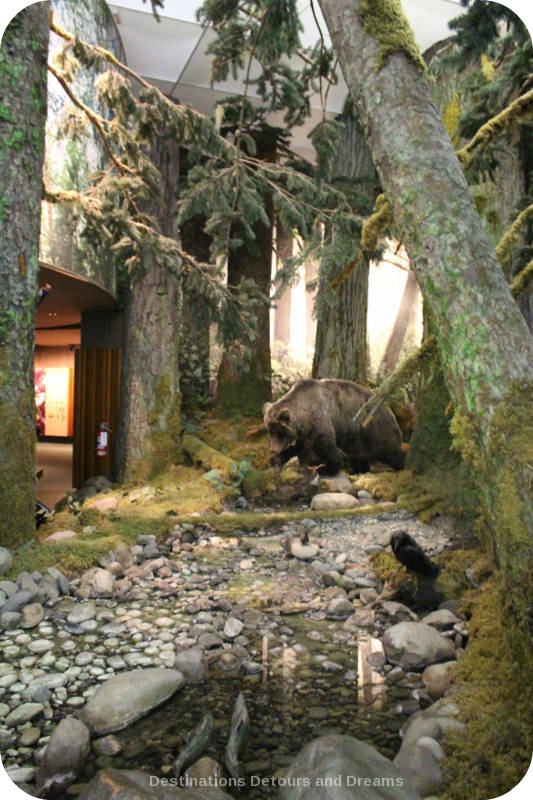
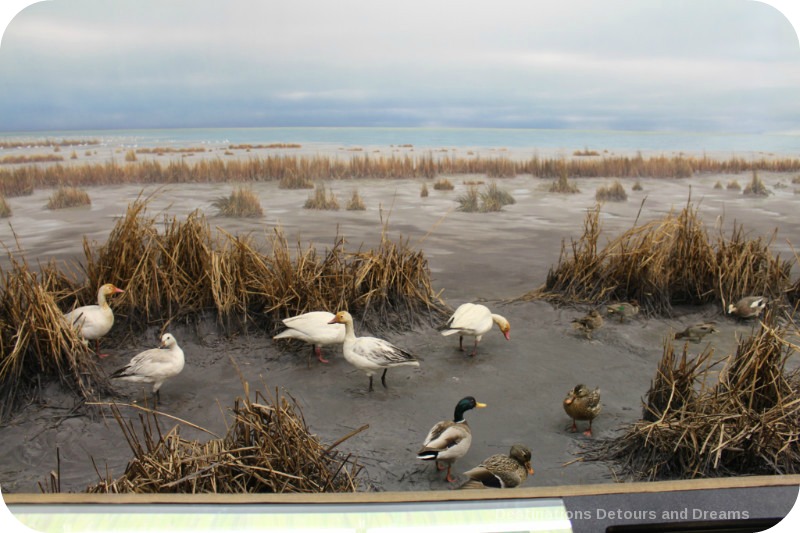
First Peoples Gallery
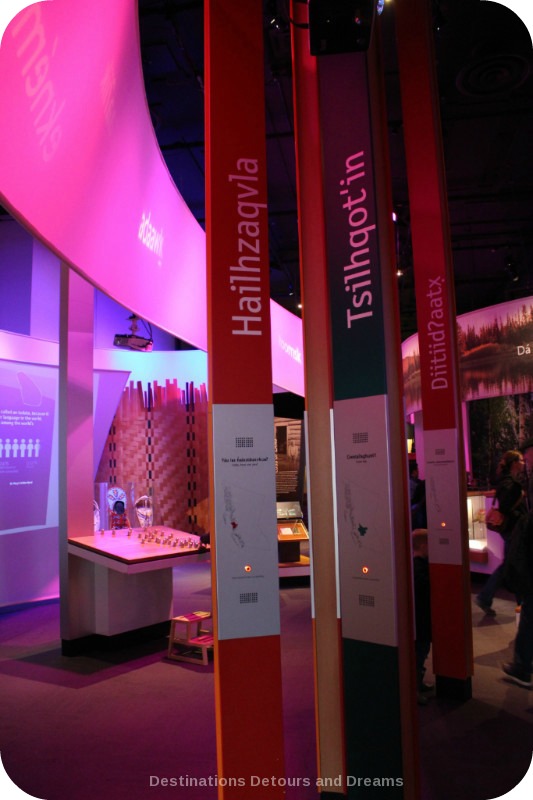
I found the First Peoples Gallery to be one of the most interesting areas of the Museum. I entered into the exhibition space through the Our Living Languages Exhibition. This exhibition celebrates the resilience and diversity of First Nations languages in British Columbia. I walked through a “language forest”. The “trees” are poles with information about greetings in 34 First Nations languages. You push a button and hear the greeting. I watched part of a film which left me pondering the ways the words which are included in or excluded from a particular language both shape and reflect a people’s culture.
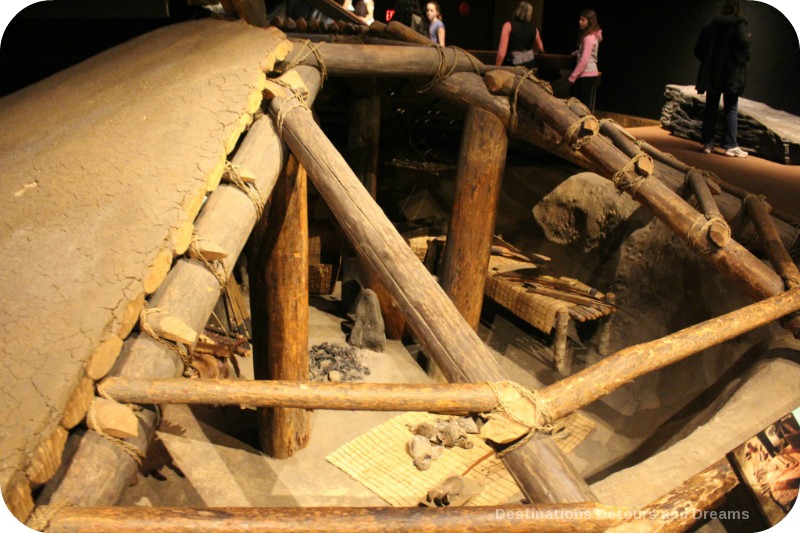
Kekuli is the word for house in the language of the Secwepemc people of south-central British Columbia. The construction of the model in the Museum is based on historical drawings, photographs and information from a Secwepemc advisor who was born in a kekuli.
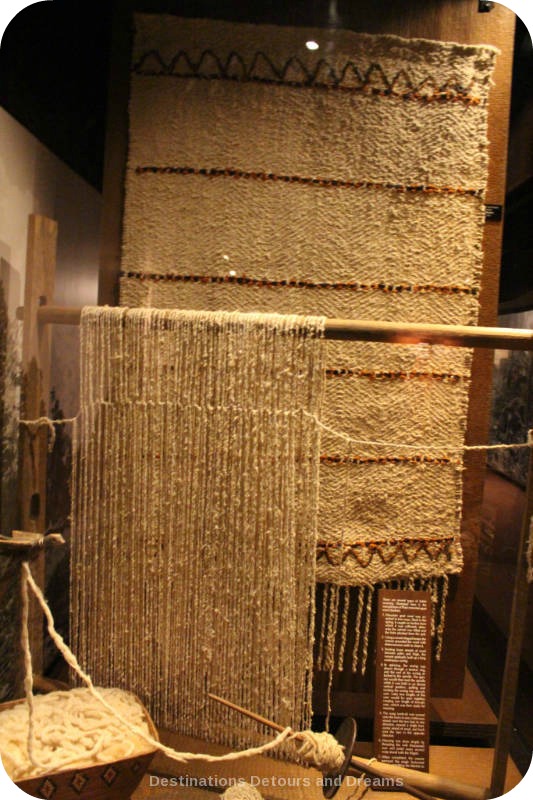
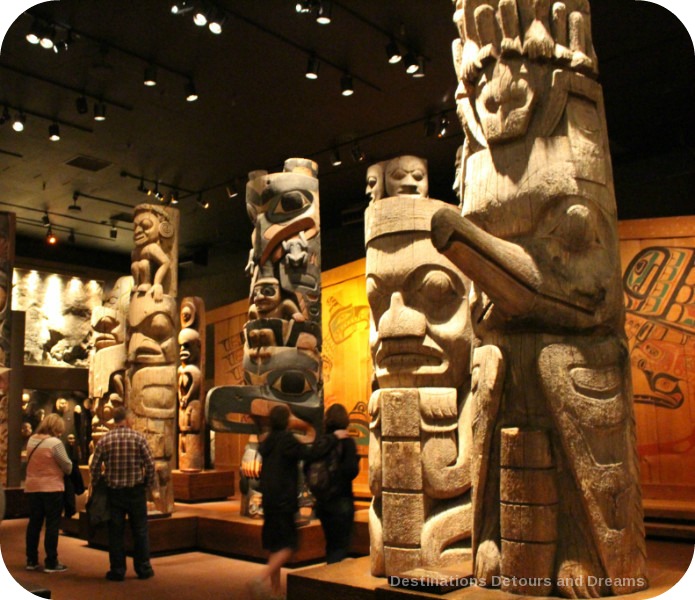
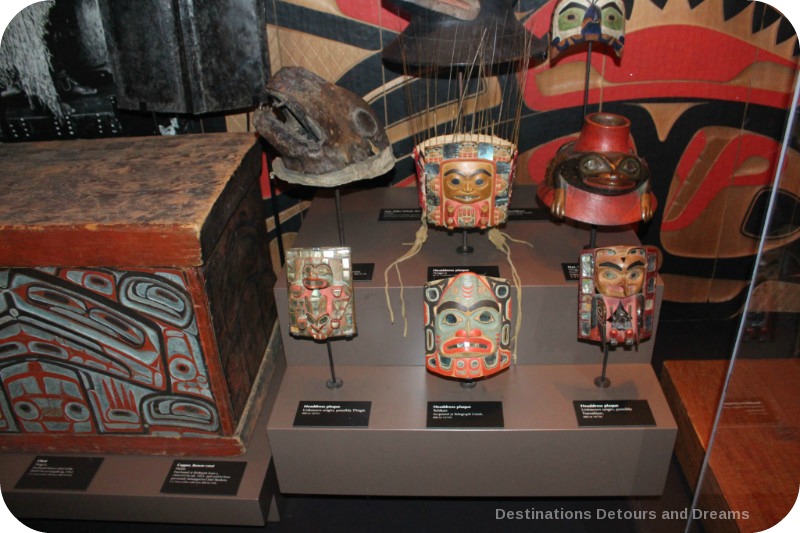
Displays of art work highlight the variations in styles among different Nations. For example, Haida sculpture is readily identified by the curved, raised eyelid line and the distinctive concave orbit sweeping in a curve from the bridge of the nose past the temple to nostril. Tsimshian art is smoothly transitional, although features like cheeks are prominently defined. Nootkan human face masks consist of two vertical planes receding from a central axis. Features such as eye sockets are not noticeably recessed.
The second part of the gallery is labelled Contact and highlights how the arrival of and contact with the first white people began a period of change for the First Nations. Changes included exposure to new diseases which nearly brought extinction. The Nations adapted to new laws and customs, which changed traditional ways of life. Changes also included availability of new materials. Beads and silk thread were incorporated into art and clothing as decorative material.
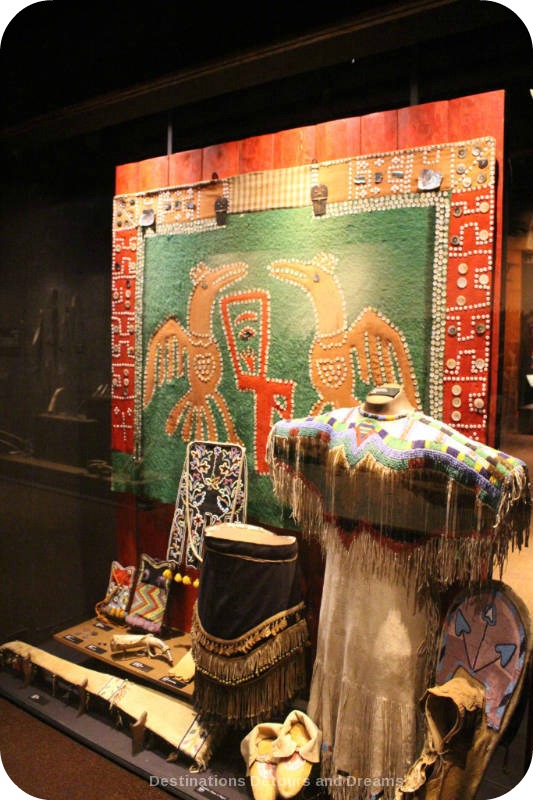
Modern Histories
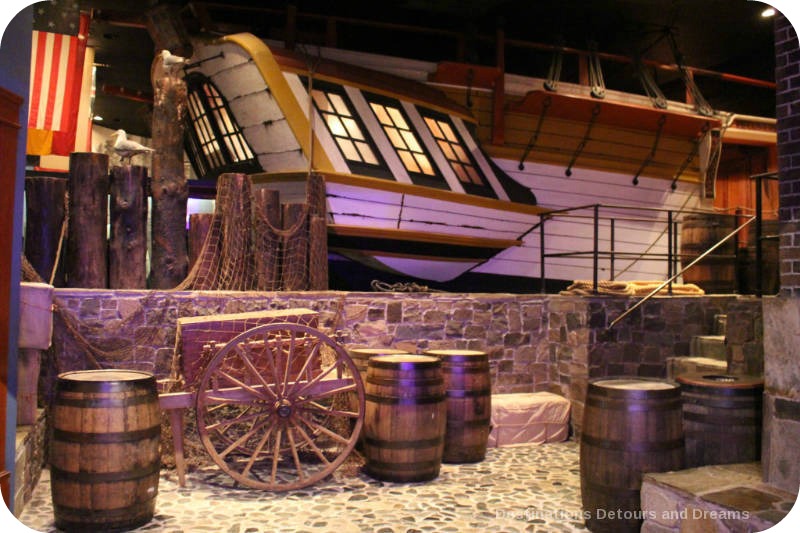
The Modern Histories Gallery focuses on arrival by land and sea of non-native peoples, the mining and lumber industries which drew them to this part of the world, and how they reshaped the landscape. The gallery includes replicas of streets, businesses and residences.
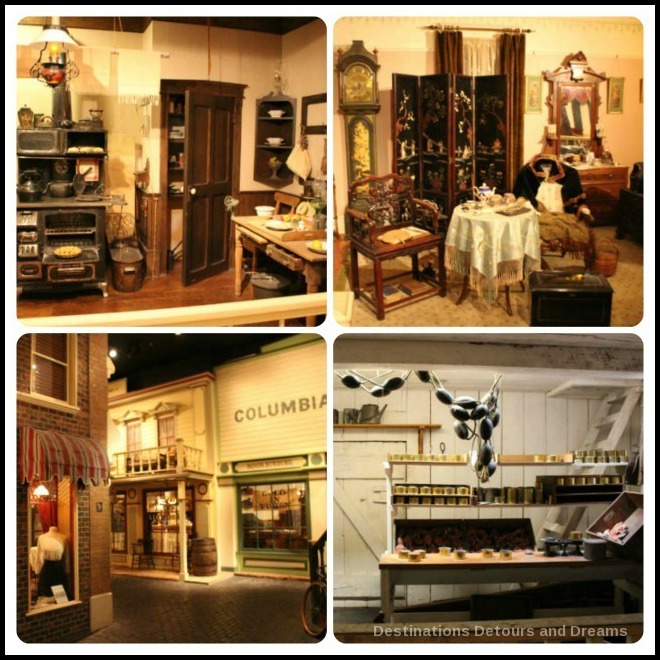
Thunderbird Park and Helmcken House
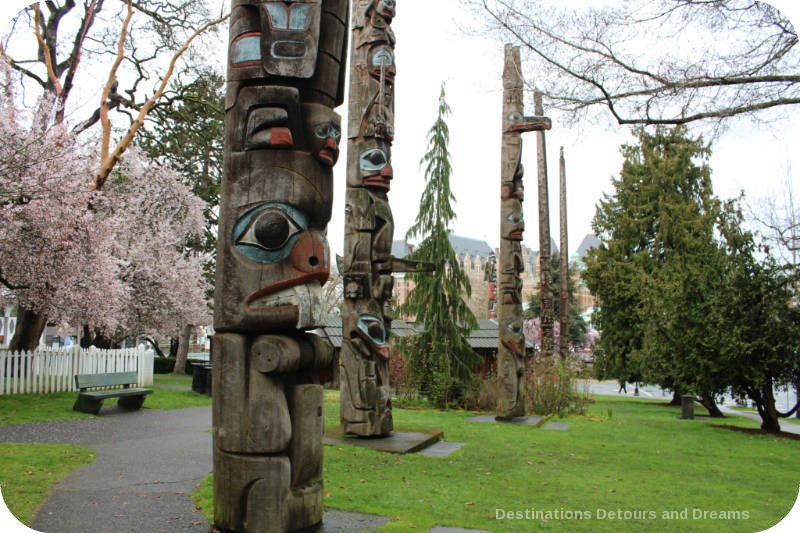
Thunderbird Park, outside the Museum Building, is home to a number of totem poles. Totem poles from the Museum’s collection were first displayed here in 1941. However, over the years, deterioration of the poles became a serious concern. The totem poles currently on display are replicas of the original, which have been moved inside.
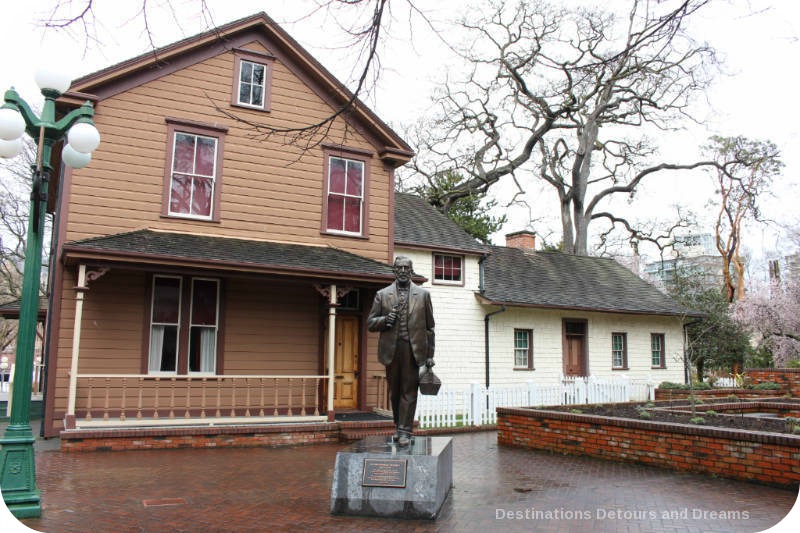
Helmcken House, now located in Thunderbird Park, is a one-storey house with two two-storey wood-frame additions. It was home (1853 to 1920)of Dr. Sebastian Helmcken, first Speaker of an elected assembly in British Columbia, early Vancouver Island doctor, and founding president of the British Columbia Medical Association. He married the eldest daughter of Sir James Douglas, Governor of the colony of British Columbia from 1851 to 1864. Helmcken House was one of the first houses to be built in James Bay, Victoria’s earliest residential neighbourhhood.
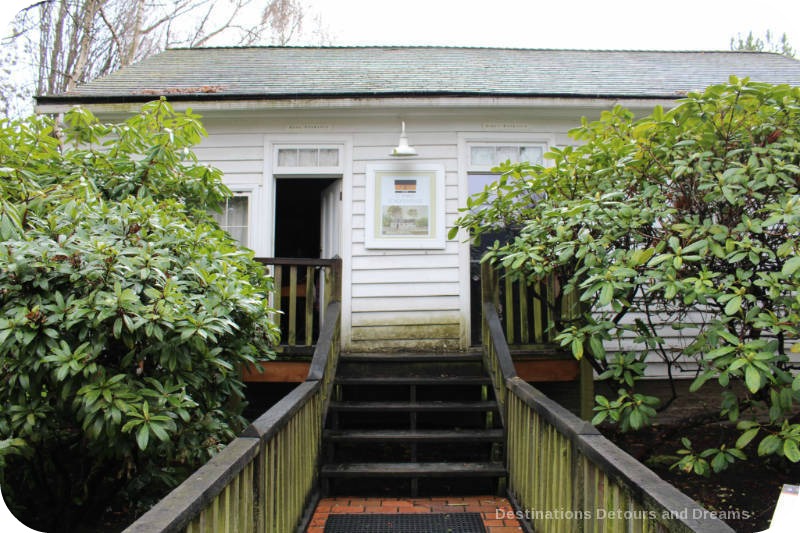
Museum Information
There is much to see in the Museum and one can easily spend the better part of a day. I love museums, but my personal limit rarely stretches beyond three hours, at which point I reach an information saturation point. If you want to go through the Museum in less than that amount of time, you will need to skim through some sections. Alternatively, if you are able, you may want to plan several visits, focusing on a different gallery in each visit.
In addition to its permanent galleries, the Museum runs special time-limited exhibitions. The Museum is open daily. Hours vary by season. Check the Museum website for schedule and admission information.
You can wander through Thunderbird Park at any time without charge. Helmcken House is open in the afternoons from July 1 through the September Labour Day weekend at no charge.
If you enjoyed this post, sign up for Destinations Detours and Dreams monthly e-newsletter. Get behind the scenes information and sneak peeks ahead in addition to a recap of the month’s posts.
PIN IT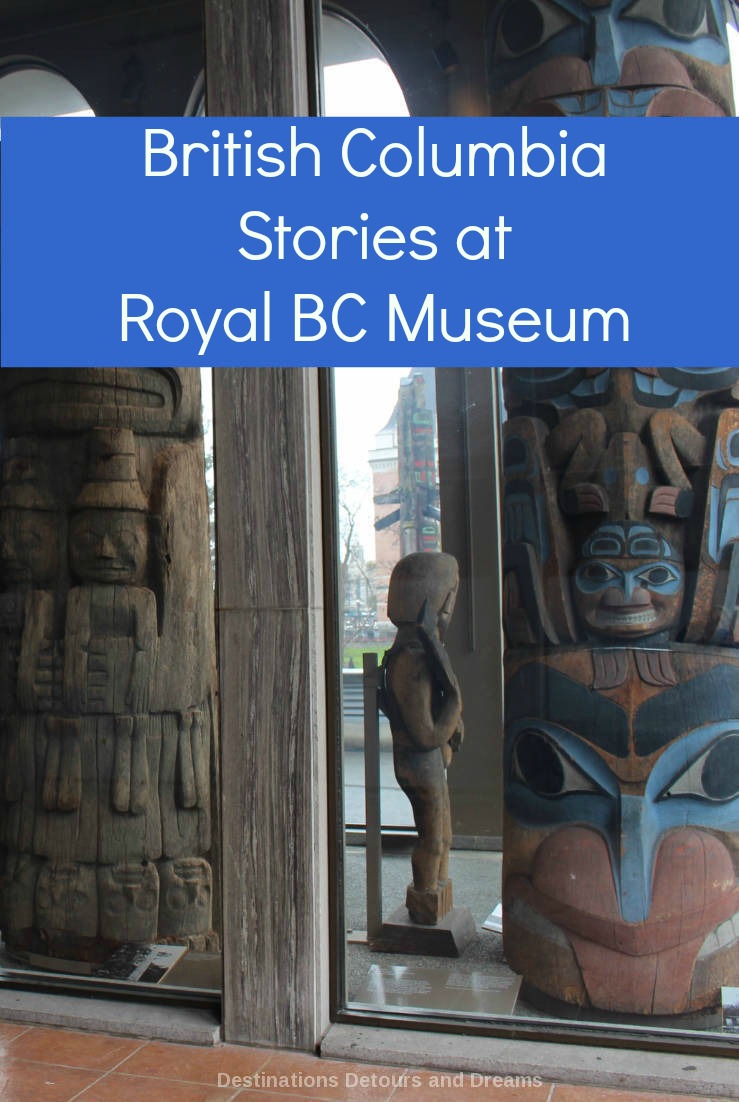

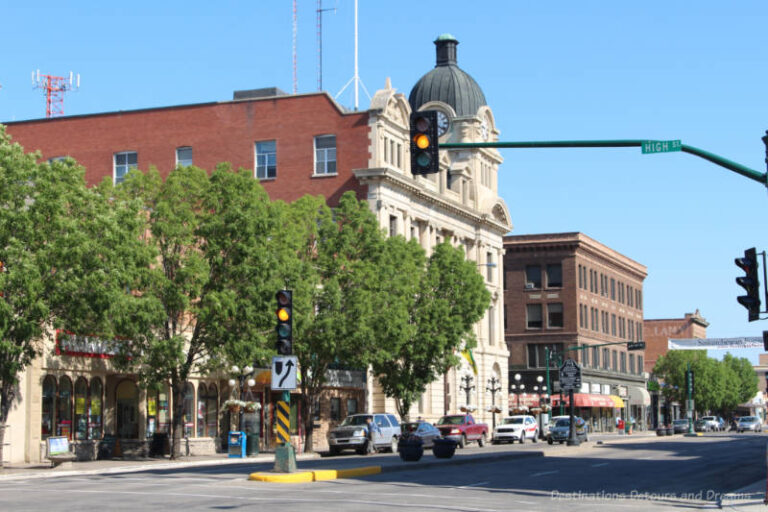
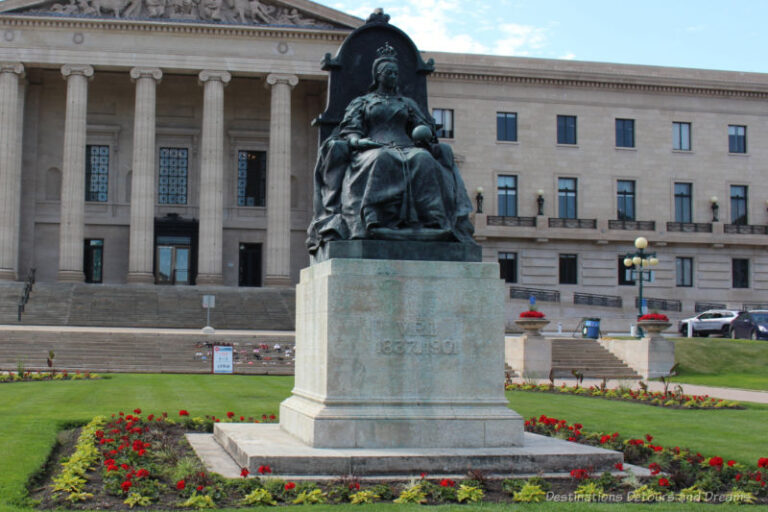
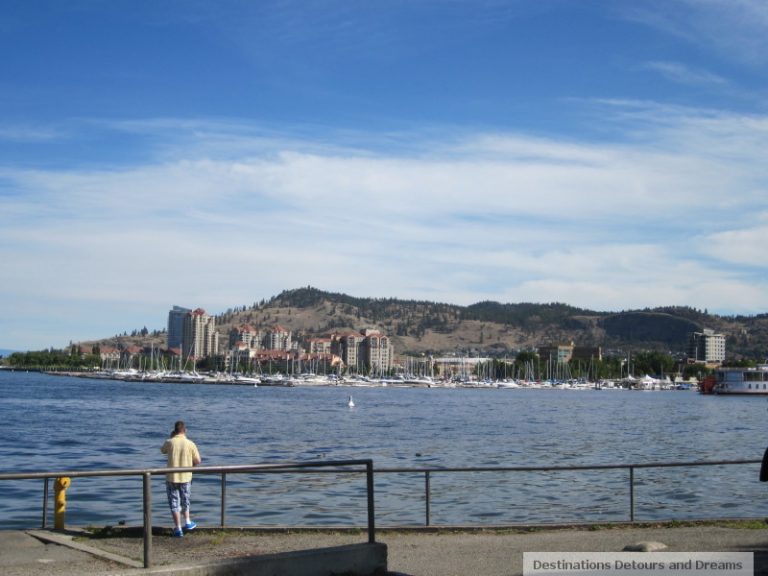
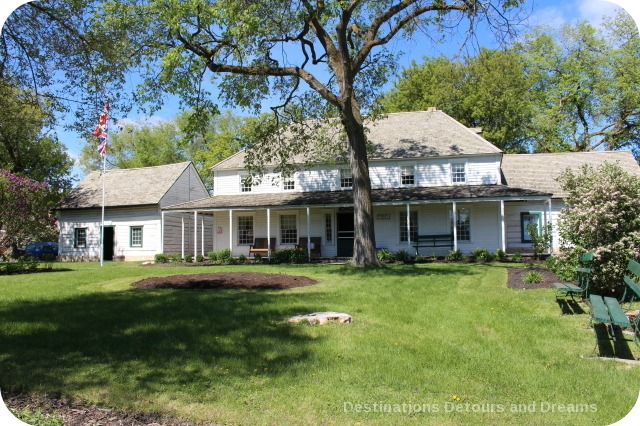
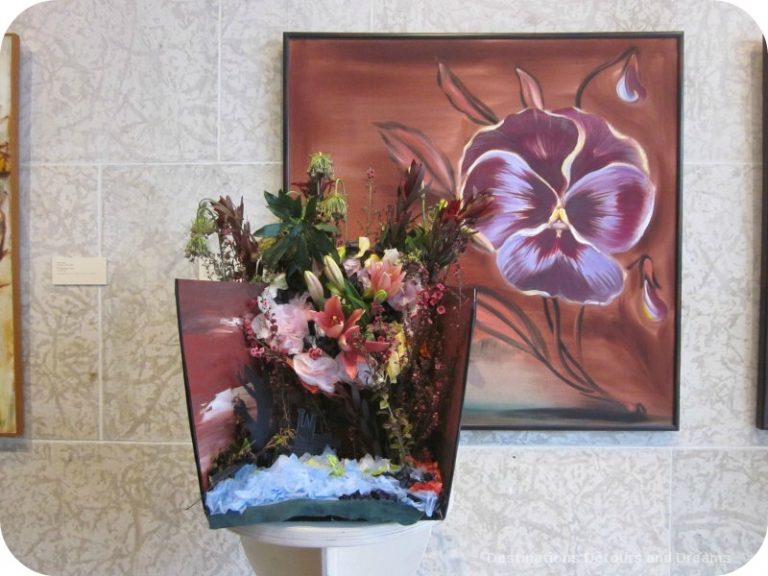
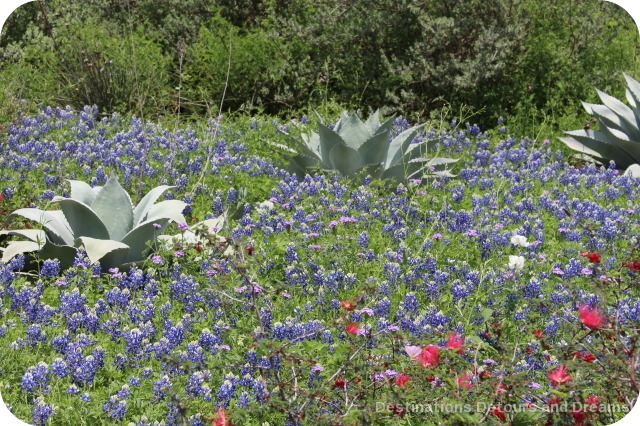
I have spent so many hours at that museum. Every time I go there is something new to see. There are often wonderful special exhibits and I never tire of the traditional ones.
Brenda, I think that is a sign of a great museum – that you can visit many times and find new things.
What a fascinating museum! I’ve never heard of a language forest but it sounds like the perfect description for a way to experience the range of First Nations’ languages
Michele, there was a lot of interesting information in that language area. But the entire museum is fascinating.
Nice description of a fascinating museum. It’s been awhile since we’ve visited, but – as you note – there is always a lot to see.
Cindy, it had been many years since I’d visited as well. I’d forgotten what a great museum it is.
This is a terrific museum. It’s a long time since I’ve visited it, but it never fails to fascinate. Everything is fantastically well presented and researched. A ‘must’ for anyone visiting Vancouver Island. Love that dear ol’ wooly mammoth!
Ursula, I too highly recommend this museum. It is a favourite of family members who live in Victoria,who enjoy visiting again and again.
This is yet another reason to visit Vancouver. I am finding multiple reasons to do so. This museum looks like a real gem!
Debbra, this museum is actually in Victoria, but there are many good reasons to visit both Vancouver and Victoria,if you should choose a trip north instead of your usual tropical destinations.
Oops! Sorry for my error! Yes, I need to come to Canada and get more familiar with it. So far I have only been to Quebec City before a cruise.
Hi Donna,
Don’t you love it when a museum really engages you and does such a great job of portraying the past? I have seen a few around the world, and it’s a testament to the dedicated curators and museum staff. Conrad and I are considering a road trip to and around the western North America. Must put this museum on our list. Thanks for the peek inside.
Regards,
Josie
Josie, I do love it when a museum does a great job of portraying the past. This museum is worth putting on your list.
I think I was at this museum a very long time ago, Donna. It reminds me of the Museum of Civilization (can’t remember the new name) of that wonderful museum in Ottawa.
Doreen,I think the new name of that museum is the Canadian Museum of History. I haven’t visited it. We almost did on our last trip to Ottawa, but I don’t remember now what came up instead.
I love history and I enjoyed my visit to Victoria, but somehow, unfortunately, I missed the Royal BC Museum. I like the way they have it arranged in chronological order of history, and the vast number of different exhibits. Very interesting!
Marilyn, the Museum is worth a visit should you make another trip to Victoria. I too like the way it is arranged.You could focus on just one section if you were so inclined.
Thanks for doing a fine job of making me feel I’m touring with you–looks like an amazing Museum that truly captures the area. Like you, I last a few hours in a museum and then start to feel my eyes glaze over–a bummer because there is obviously so much to see.
Thanks RoseMary. If I were to spend an entire day in a museum (and there are some museums in the world which merit spending that much time), I think I’d have to take a few breaks for lunch and coffee so I could go back and take in more.
I’m a sucked for a good museum and this one seems to be a really nice one. It’s nice being able to trace history like this and understand the background.
Corinne, I too love good museums – this is definitely a good one!